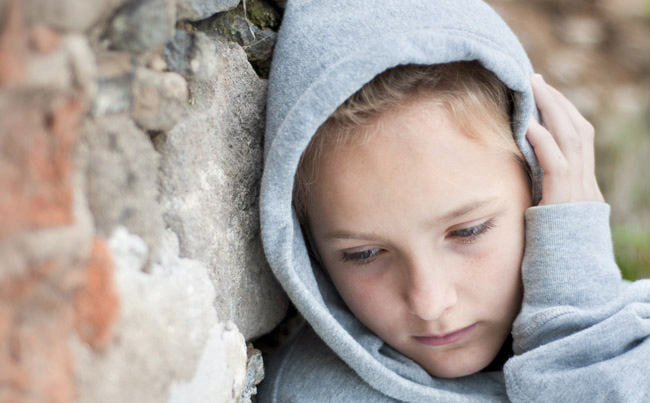Lyme Disease
Lyme Disease
Neuropsychiatric Presentations
Neuropsychiatric Lyme disease
Substantial cognitive & pyschiatric Lyme disease symptoms
Children and Adolescents can suffer from a broad range of neuropsychiatric manifestations due to Lyme disease.

Types of neuropsychiactric Lyme disease symptoms
Neuropsychiatric symptoms may be the first symptom recognized or can surface months or years later. One study found Lyme encephalopathy in children presented with “memory impairment, irritability and somnolence” months to years after the initial classical presentation of Lyme disease.1 Another study found 4% of children with Lyme disease developed encephalopathy more than 10 years after onset of the disease.2
Neuropsychiatric symptoms improved with antibiotics in: 1) a 12-year-old boy with Lyme arthritis, depression, and anorexia, 3 and 2) a 21-year-old with progressive confusion, agitation, disorientation, inappropriate laughter, and violent outbursts with spirochetes in on a temporal lobe biopsy, 3 and 3) an 18-year-old college freshman with severe and sustained anxiety, depersonalization, and panic attacks associated with insomnia and appetite loss. 4 Lyme disease psychiatric manifestations such as behavioral changes and memory deficits may have its greatest impact on school performance and quality of life. Intellectual functioning may be normal but auditory or visual sequential processing pathology have been reported. 5,6,7
Cognitive impairment from Lyme disease
In a well-designed controlled study investigating cognitive impairment in children having already received antibiotic therapy (previous medication type, dose, and treatment duration not reported), a significant number continued to experience problems. 8
Neurocognitive testing revealed frequent and severe headaches (100%), brain fog (88%), short-term memory loss (94%), word-finding problems (82%), distractibility (82%), schoolwork deterioration (94%), irritability/depression (94%), insomnia (82%), and sensitivity to sound (58%) and/or light (74%). 8

Another study reported children with Lyme disease exhibited oppositional behavior, anxiety disorders, and attention-deficit/hyperactivity disorder (ADHD). 6 A report by Riedel et al. described a child with Lyme disease presenting with Tourette’s syndrome, a neurologic tic disorder also seen in PANDAS, which resolved with antibiotic treatment. 9
While focus in this section has been on the neuropsychiatric impact in children and adolescents, adults can suffer significantly as well. Studies by Fallon et. al. have found that Lyme disease in adults has been associated with a range of psychiatric ailments including paranoia, dementia, schizophrenia, bipolar disorder, panic attacks, major depression, anorexia nervosa, and obsessive-compulsive disorder.
Meanwhile, the study described 11 out of 13 Lyme encephalopathy patients (85%) showing a clear improvement in their neuropsychiatric symptoms within 1–3 months after a four-week course of IV ceftriaxone.
- Bloom BJ, Wyckoff PM, Meissner HC, Steere AC. Neurocognitive abnormalities in children after classic manifestations of Lyme disease. Pediatr Infect Dis J, 17(3), 189-196 (1998).
- Szer IS, Taylor E, Steere AC. The long-term course of Lyme arthritis in children. N Engl J Med, 325(3), 159-163 (1991).
- Mink J, Kurlan R. Acute postinfectious movement and psychiatric disorders in children and adolescents. J Child Neurol. 2011;26(2): 214–217.
- Perry CB. Erythema marginatum (rheumaticum). Arch Dis Child. 1937;12(70):233–238.
- Bloom BJ, Wyckoff PM, Meissner HC, Steere AC. Neurocognitive abnormalities in children after classic manifestations of Lyme disease. Pediatr Infect Dis J. 1998;17(3):189–196.
- Fallon BA, Kochevar JM, Gaito A, Nields JA. The underdiagnosis of neuropsychiatric Lyme disease in children and adults. Psychiatr Clin North Am. 1998;21(3):693–703, viii.
- McAuliffe P, Brassard MR, Fallon B. Memory and executive functions in adolescents with posttreatment Lyme disease. Appl Neuropsychol. 2008;15(3):208–219.
- Tager FA, Fallon BA, Keilp J, Rissenberg M, Jones CR, Liebowitz MR. A controlled study of cognitive deficits in children with chronic Lyme disease. J Neuropsychiatry Clin Neurosci. 2001;13(4):500–507.
- Riedel M, Straube A, Schwarz MJ, Wilske B, Muller N. Lyme disease presenting as Tourette’s syndrome. Lancet. 1998;351(9100):418–419.
More About Lyme Disease
Learn More
Learn More
Learn More



